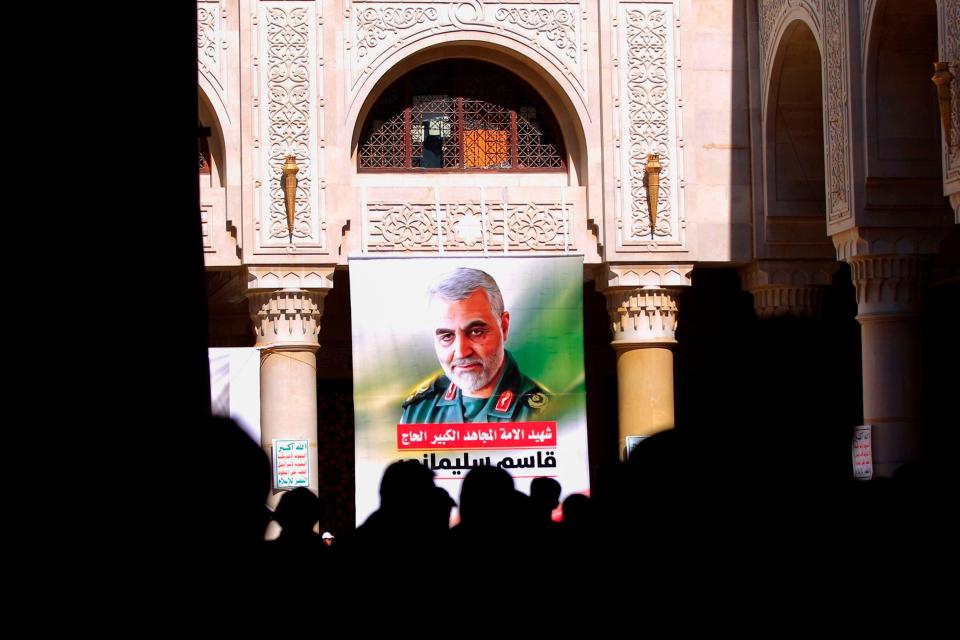Deadly explosions kill more than 100 at event honoring Iranian general killed by US
DUBAI, United Arab Emirates — Explosions at an event honoring a prominent Iranian general slain in a U.S. airstrike in 2020 have killed at least 103 people and wounded over 140 others, state-run media in Iran reported Wednesday.
A senior official called the blasts a "terroristic" attack, without elaborating on who could be behind them amid wider tensions in the Mideast over Israel's ongoing war against Hamas in the Gaza Strip. No group immediately claimed responsibility for the attack.
Iranian state television quoted Babak Yektaparast, a spokesman for the country's emergency services, for the casualty figure.
The blasts struck an event marking the fourth anniversary of the killing of Gen. Qassem Soleimani, the head of the Revolutionary Guard's elite Quds Force, who died in a U.S. drone strike in Iraq in January 2020. The explosions occurred near his grave site in Kerman, about 500 miles southeast of the capital, Tehran.

Authorities said some people were injured while fleeing afterward. Footage suggested the second blast occurred some 15 minutes after the first. A delayed second explosion is often used by militants to target emergency personnel responding to the scene and inflict more casualties.
Kerman's deputy governor, Rahman Jalali, called the attack "terroristic," without elaborating. Iran has multiple foes who could be behind the assault, including exile groups, militant organizations and state actors. The country of around 88 million has supported Hamas as well as the Lebanese Shiite militia Hezbollah and Yemen's Houthi rebels.
Soleimani was the architect of Iran's regional military activities and is hailed as a national icon among supporters of Iran's theocracy. He also helped secure Syrian President Bashar Assad's government after the 2011 Arab Spring protests against him turned into a civil, and later a regional, war that still rages today.

Relatively unknown in Iran until the 2003 U.S. invasion of Iraq, Soleimani's popularity and mystique grew after American officials called for his killing over his help arming militants with penetrating roadside bombs that killed and maimed U.S. troops.
A decade and a half later, Soleimani had become Iran's most recognizable battlefield commander, ignoring calls to enter politics but growing as powerful, if not more, than its civilian leadership.
Ultimately, a drone strike launched by the Trump administration killed the general, part of escalating incidents that followed America's 2018 unilateral withdrawal from Tehran's nuclear deal with world powers.
Soleimani's death has drawn large processions in the past. At his funeral in 2020, a stampede broke out and at least 56 people were killed and more than 200 were injured as thousands thronged the procession.
This article originally appeared on USA TODAY: Explosions kill dozens at event honoring Iran general Qassem Soleimani
